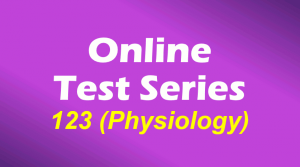Medical PG Online Test Series 123 – Physiology
[WpProQuiz 94][WpProQuiz_toplist 94]
After completion of test, please send your score for display through the test system so that you can assess your performance compared to other users. Recent tests can be accessed from the home page while older ones can be seen through ‘MOCK TESTS’ link in the navigation bar at the top.
One Comment






Very helpful questions to check your knowledge. Thanks sir